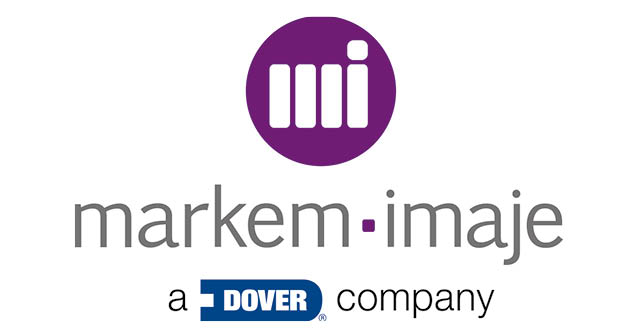
5 minute read
The cream of the crop: supporting the resilience of the UK dairy industry
Whether it is due to global market pressures, fluctuating farmgate milk prices or changing consumer tastes, the UK dairy sector is under constant pressure to evolve. Advanced product coding technology is helping manufacturers to address these challenges and achieve greater resilience.
Enhancing Quality Control
The highly perishable nature of dairy products makes consistent quality control critical to the industry. With more sanitary risks than in many other food and drink sectors, dairy companies require a faultless traceability system capable of coping with large volumes of products at high speeds. Companies also need the ability to successfully recall all affected product lots in the event of an issue. Solutions such as those offered by product coding specialist Markem-Imaje ensure not only in-depth traceability but also enhanced health and safety at facility level, for example by reducing the level of operator intervention required. Through these types of improvements, effective product coding solutions can advance product quality, health and safety and consumer perception.
Supporting product variety
Whether it is milk, artisan ice cream or 700-plus types of cheese, the UK dairy sector produces an impressive array of products. Yet this variety creates another challenge for manufacturers. They must ensure that their product coding systems are capable of safely and efficiently adapting to printing on different types of substrates while maintaining the pace of productivity. Alongside this, certain types of products, such as speciality cheeses, are wrapped in thin or fragile types of substrates. This requires dairy companies to achieve coding application flexibility for diverse substrates without putting product or packaging quality at risk. Technology such as Markem-Imaje Continuous Inkjet (CIJ) solutions provide a comprehensive and highly flexible solution due to a printhead that requires little intervention, guaranteeing high quality coding and increasing overall productivity, as well as offering a range of food- grade inks.
Changing consumer tastes
Shifts in consumer tastes present fresh opportunities for the UK dairy sector. However, responding to appetites for new flavours and products demands the capacity to update or scale up production quickly and seamlessly. Diversification offers many advantages to dairy companies but also poses complex challenges because it involves ensuring that facilities are set up effectively for new packaging substrates. Again, coding technology from MarkemImaje is helping manufacturers to adapt more quickly to changing consumer behaviour with solutions that are capable of being changed over quickly and more effortlessly, or that are versatile enough to code different types of substrates.
One example of this is the Markem-Imaje Large Character High Resolution Piezo (LCIJ) 5000 Series which offers excellent adhesion and print quality onto substrates as diverse as carton cases, trays and shrink wrap, delivering exceptionally legible and durable barcodes with food-grade inks. Dairy manufacturers can also achieve precise marking with impeccable GS1(UCC-EAN)-compliant barcodes and pallets precisely tracked through the entire supply chain with the Markem-Imaje Print and Apply 2000 Series for pallet coding. This technology delivers reliable results in even the most demanding production environments, like those common in the UK dairy industry.
Addressing environmental concerns
UK dairy product companies are under pressure to respond effectively to increasing regulatory requirements and growing consumer interest in products’ environmental credentials. The sector must be ready to implement effective measures and must also be able to highlight these to potential customers. So how can manufacturers achieve this while also maximising productivity? It is this question that led Yörükoğlu, Turkey’s leading manufacturer of milk, yoghurt, cheese, ice creams and other products to enhance its approach to sustainability and increasing product exports. The company transitioned from the use of Volatile Organic Compound (VOC) generating MEK-based inks on its packaging to the MarkemImaje EB588 ink, one of several food grade varieties for the technology. This MEK-free alternative supports product sustainability by generating 40% fewer VOCs under comparable operating conditions. By installing three Markem-Imaje continuous inkjet (CIJ) printers to trial the MEK-free inks, Yörükoğlu has seen a 30% to 40% reduction in consumable usage. The company has also found that the performance and speed of the MEK-free ink was equal to, if not better than that of traditional alternatives.
The Markem-Imaje marking and coding solutions and CoLOS® software have also helped Töpfer GmbH, one of Germany’s leading producers of organic baby food and milk-based natural cosmetics, to reduce the environmental impact of its packaging operations and to ensure precise traceability and verification capacity for the first time. The company now uses only recyclable materials in its packaging and has significantly reduced paper waste by using Markem-Imaje CIJ technology to print directly onto recyclable plastic containers. The CoLOS® software also helps to address one of the major problems facing dairy producers especially in high-wage markets like the UK, namely the shortage of skilled labour shortage. This is because it enables the automation of packaging line verification, serialization and other processes, all the while being compatible with all major MES and ERP systems in use.
Opportunities ahead
While the UK dairy industry continues to face complex challenges, new opportunities also lie ahead. Responding effectively to both means embracing diversification, innovation and collaborative partnerships, alongside identifying smarter ways to enhance and improve production practices. Adopting product coding solutions capable of advancing traceability, product quality and productivity can help businesses achieve their wider goals and support the resilience of the sector as a whole.














